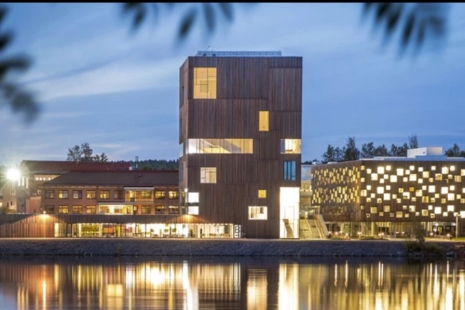Underlandet [The Wonderland] and Chelgis I, a human-scale sculpture covered in hair and enclosed in a glass case. The title refers to a girl in a Persian tale whose name means ‘forty braids’. Moghaddam has created the new sculpture What they gonna do with the inevitable growth of sprouts? Chelgis VI, as well as a new work in the Underlandet series, especially for Bildmuseet.
This work is part of a series of sculpture and video installations that Mandana Moghaddam began in 2002. The series is named after the Persian fairy tale Chelgis [Forty Braids], which is well known in Iran. Chelgis, a girl with forty braids, is captured by a demon in a beautiful garden. It imprisons her, and manipulates both the girl and the outside world. The only way that she can be freed is if someone finds and destroys the bottle which holds the demon’s power and spirit. A prince breaks the bottle, thereby freeing Chelgis.
Moghaddam reinterprets the fairy tale, depicting Chelgis as a human-like figure who is completely covered by long hair, in the form of both braids and loose strands, enclosed in a glass cage. The sculpture creates the illusion of the figure being seen from behind, but as you walk around it in search of a face, it constantly appears to be turning away. She stands there, seemingly calm and still in her glass prison, while her hair grows and emerges from under the glass down at floor level. There is an ambiguity in the way the figure is fully enclosed by hair. It both covers her like a veil – as a form of enforced or self-chosen protection – and exposes her, as in an act of resistance against the Iranian regime’s demands that women should cover their hair.
The sculpture was created to be exhibited in Iran in 2002, but was censored despite art experts insisting that it depicted the theme of the ancient fairy tale, rather than contemporary women. The oppression of women, combined with defiance and resistance, is a unifying theme in Moghaddam’s interpretations of the Chelgis tale. Female hair appears as a symbolic material throughout the works in the series. Three versions of the sculpture Chelgis I have been produced.
Moghaddam often draws on her own memories and experiences in her artistic work. Taking personal experiences as a starting point, her art addresses issues of cultural and gender-based violations of human rights; issues of exile, exclusion and isolation. As a woman and a refugee herself, and having experienced a regime that oppresses women, she depicts and criticizes the things she has been subjected to. At the same time, there is an ambiguity in her work that allows for multi-layered readings of universal human issues that we can all recognise, regardless of who or where we are.





